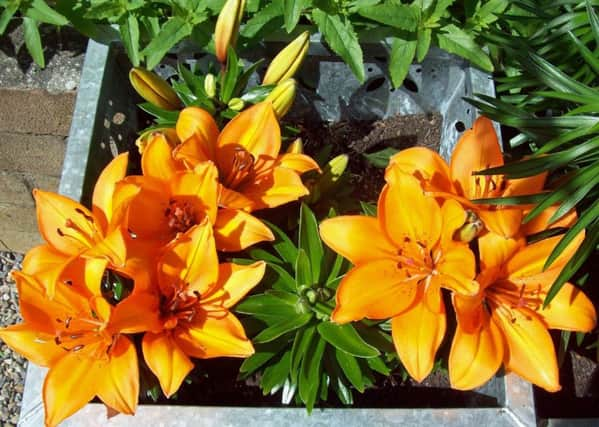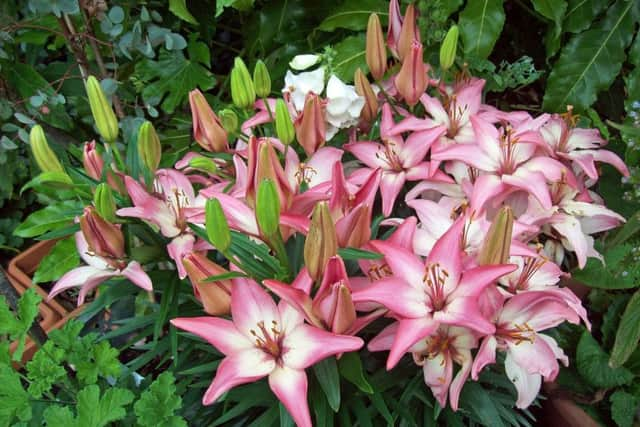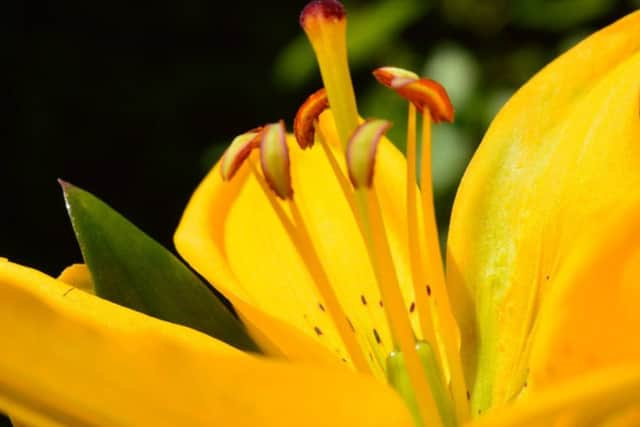Gardening: Tips on growing lilies that are ideal for garden pots


Asiatic lilies grow to just 60cm (24”) and flower from June-September.
They produce up to 20 clustered blooms per stem, so are ideal as cut flowers.


Advertisement
Hide AdAdvertisement
Hide AdHere’s how to plant them – and some of the other lily species.
Place a 5cm layer of crocks at the bottom of the pot. Plant single large bulbs (10-12cm diameter) into a 20-23cm pot, or plant three to four smaller bulbs (5-8cm) into 23-25cm containers.
Allow 5cm between bulbs and use only deep pots.
Asiatic hybrids root from the base of the bulb only – so they should be planted at a depth equal to the height of the bulb.


L. formosanum, L. lancifolium and L. longiflorum, produce roots from the stems too, so plant these two-and-a-half times the height of the bulb.
Advertisement
Hide AdAdvertisement
Hide AdMultipurpose compost is OK, as is John Innes No 3, with a handful of horticultural grit added.
Add granules of a controlled-release fertiliser.
Meanwhile, lime-hating L. auratum and L. speciosum need ericaceous compost.


These should be fed with a tomato fertiliser every fortnight during summer.
In larger containers, lilies can be grown on for a second season in the same pot, but refresh the top five centimetres (2in) of compost and feed well.
Advertisement
Hide AdAdvertisement
Hide AdYou can leave pot-grown lilies outside in winter, but wrap the containers in bubble wrap.
But if it is extremely cold, then keep the pots in frost-free sheds until spring.


GET IN TOUCH
l For more information, plus cook what you grow, recipes, environmental news and more, log on to the website www.mandycanudigit.com (which is also now smartphone friendly), follow me on Twitter @MandyCanUDigIt or you can like me on my Facebook page at Mandycanudigit
JOBS FOR THE WEEKEND
Deadhead spent daffodils, but let the leaves die down naturally, to store food for next season’s display.
Advertisement
Hide AdAdvertisement
Hide AdSupport peas sown last autumn or earlier this year, using twiggy sticks, or wide mesh netting. Prepare runner and climbing French bean supports if you want to save time later in the year.
Tie in honeysuckle, clematis and other climbers as new growth starts to sprout.
On variegated plants, prune out shoots that have reverted to green. If left unchecked, they will eventually take over from the variegation.
Perennials should be staked early so they can be tied in unobtrusively before they start to flop. Use prunings from around the garden to make your own supports.
Advertisement
Hide AdAdvertisement
Hide AdFeed the soil after the excessively wet. Use compost, or well-rotted manure, around established plants, and in planting holes for new plants.
Tear off rose suckers. Cutting leaves a growth bud, but tearing rips it off.
There are lots of annuals you can sow now including Californian poppy, Nigella and poached egg plants, which are good for pollinators.
To prevent algae build-up in your pond, add a small bale of barley straw.
Advertisement
Hide AdAdvertisement
Hide AdAs light levels and temperatures increase, this triggers algae growth in the pond, making the clear water go green! Have plenty of plants around the pond’s sides for moist shelter, essential if your pond is set in gravel.
Divide clumps of herbs that have become too large. Plants, such as bay, that are difficult to propagate otherwise, can be layered now. Refresh herbs growing in pots by scraping off the top 5cm/2” of compost, topping up with fresh and finishing off with a layer of horticultural grit to retain moisture.